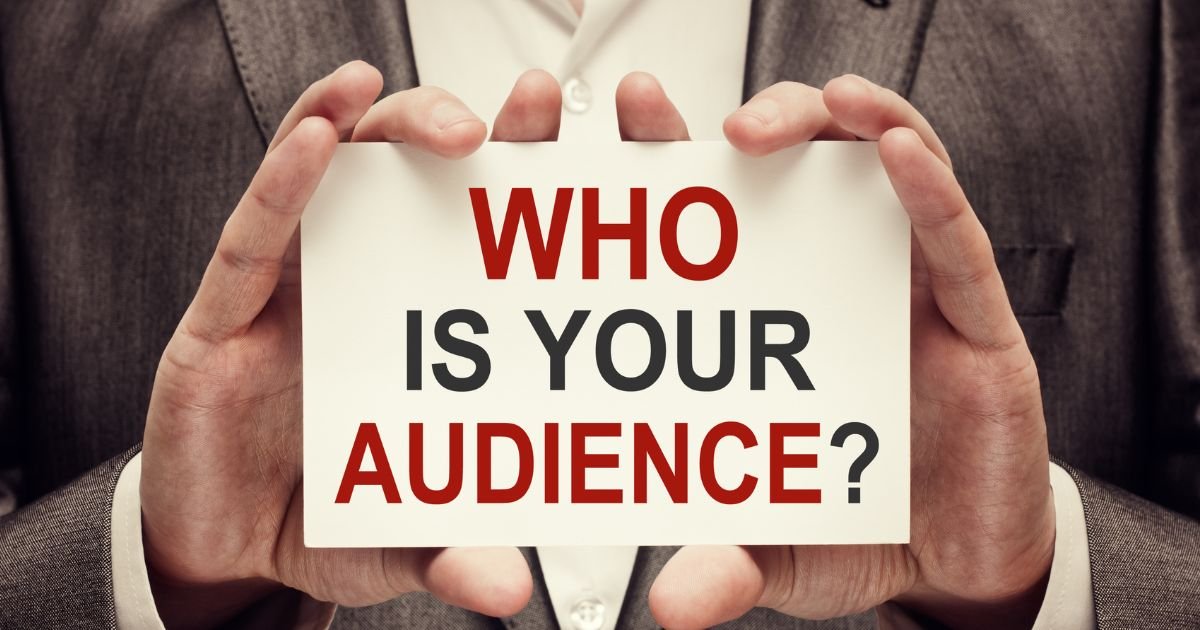To write a tour guide script, identify key attractions, and weave in engaging stories. Highlight facts that captivate and entertain your audience, keeping them intrigued throughout the tour.
How to Write a Tour Guide Script perfectly? A tour guide script is the backbone of any memorable and educational guided tour. Crafting a script requires a balance of historical data, interesting anecdotes, and practical information. It should be engaging, offering unique insights that intrigue your audience and provide a deeper connection to the sights.
A successful tour guide script is not just a monologue but a conversational tool to interact with your audience and enhance their touring experience. It’s crucial to tailor your content to your specific audience, ensuring clarity and relevance. The goal is to leave your tour-goers with lasting impressions and newfound knowledge about the places they’re exploring. Remember, a well-crafted script is the key to making any trip both enjoyable and informative.
KEY TAKEAWAYS
- Engage Your Audience from the Start: The importance of a compelling opening hook was emphasized. Drawing in your audience from the very beginning is crucial to capture their attention and set the tone for an engaging tour. This could involve a fascinating fact, a thought-provoking question, or a captivating anecdote related to the tour destination.
- Blend Information with Storytelling: From early on, try how to effectively weave information seamlessly into storytelling. Rather than presenting a dry list of facts, the recommendation is to integrate historical details, anecdotes, and intriguing facts into a cohesive narrative. This approach not only educates the audience but also entertains and keeps them enthralled throughout the tour.
- Encourage Reflection and Interaction: Incorporate moments for reflection and audience interaction throughout the tour. Pose thought-provoking questions and invite participants to engage actively with the content. This not only enhances the educational aspect of the tour but also fosters a dynamic and participatory experience. Such an approach allows tour attendees to connect more deeply with the subject matter, making the entire tour more memorable and enjoyable.
Table of Contents
ToggleWhat Is A Tour Guide Script?
 A tour guide script is a carefully crafted narrative that guides visitors through attractions, often weaving historical facts with storytelling. Mastering scriptwriting ensures engaging and informative tours, enhancing the overall visitor experience.
A tour guide script is a carefully crafted narrative that guides visitors through attractions, often weaving historical facts with storytelling. Mastering scriptwriting ensures engaging and informative tours, enhancing the overall visitor experience.
Embarking on an unforgettable journey requires more than just a keen sense of direction; it demands a captivating narrative to guide the way. A tour guide script plays a pivotal role by being the very crux of this narrative, paving the path for explorers through a blend of storytelling and factual information.
Tour guide scripts are meticulously crafted pieces of writing designed to enrich the touring experience for guests. They serve multiple purposes:
- Instructional roadmap: It outlines the tour’s structure, guiding the guide through each segment and transition smoothly.
- Engaging storytelling tool: The script contains fascinating tales and anecdotes about the places visited, ensuring an engaging and memorable experience.
- Educational resource: By delving into historical, cultural, or natural insights, the script educates and informs the audience.
- Interpersonal connector: It prompts interaction with the audience, encouraging questions and discussions.
A well-composed script transforms a mundane outing into an educational adventure, leaving tourists with lasting memories and insights into the visited landmarks. Consider a tour guide script as the backbone of the tour, supporting a seamless integration of fun facts, navigation, and interaction that all contribute to a successful and spellbinding tour.
Tour Guide Script Opening Remarks
 Crafting an engaging tour guide script starts with a captivating opening remark. Delve into the art of scriptwriting for guides and learn the secrets of seizing attention from the get-go.
Crafting an engaging tour guide script starts with a captivating opening remark. Delve into the art of scriptwriting for guides and learn the secrets of seizing attention from the get-go.
Crafting A Captivating Beginning For Tour Guide Scripts
Crafting the perfect opening remarks for a tour guide script is akin to setting the stage for an enthralling performance. The initial words that emerge from the guide’s mouth can either spark the audience’s interest or fail to captivate them.
Therefore, it’s critical to start strong with remarks that are both welcoming and hint at the exciting journey ahead.
Incorporate Local Greetings
Starting a script with a touch of local flavor can immediately draw your audience in and show cultural immersion:
- Local greeting: Use a common greeting from the tour’s area to create a sense of place.
- Acknowledge return visitors: Express pleasure for repeat guests, signaling that the experience is worth revisiting.
Share An Intriguing Fact Or Story
Kicking things off with an interesting tidbit can pique curiosity and set the tone for the tour:
- Share a secret: Begin with an unknown or little-known fact about the location to entice your audience.
- Tell a short story: Relay a brief anecdote that ties into the tour’s theme or destination, providing a narrative hook for listeners to latch onto.
Outline Expectations Clearly
It’s essential to manage your audience’s expectations from the get-go for a smoother experience:
- Duration of the tour: Clearly stating the tour length helps guests gauge their time commitment.
- Key attractions: Preview some highlights to build anticipation for the sights and experiences on the itinerary.
Emphasize Engagement And Interaction
Encourage your guests to interact and engage with the tour, ensuring a memorable and dynamic experience:
- Promote questions: Invite the crowd to ask questions at any time, fostering a two-way dialogue.
- Suggest participation: Let guests know their involvement is not only allowed but encouraged, whether it’s trying something hands-on or sharing their insights.
Communicate Essential Safety Information
Safety must always be a priority, so make sure your audience knows what to do in case of an emergency:
- Point out safety features: Briefly note the location of exits, first-aid kits, or life vests.
- Cover basic safety rules: Include any necessary guidelines applicable to the tour to prevent accidents and ensure collective well-being.
By incorporating these elements into your opening remarks, you set the stage for an informative, enjoyable, and smoothly run tour that will keep your audience captivated from start to finish. Remember, the goal is to blend education with entertainment seamlessly—forge a connection, earn trust, and most importantly, leave your guests eager for the adventures that lie ahead.
Become A Confident Public Speaker
 Crafting an engaging tour guide script can elevate your public speaking prowess. By intertwining fascinating storytelling with clear, concise information, you become the guide audiences remember. Mastering this skill will enhance your script’s impact, ensuring an unforgettable experience for your listeners. Below I have listed 6 ways you can become a confident public speaker and boost your tour guide career:
Crafting an engaging tour guide script can elevate your public speaking prowess. By intertwining fascinating storytelling with clear, concise information, you become the guide audiences remember. Mastering this skill will enhance your script’s impact, ensuring an unforgettable experience for your listeners. Below I have listed 6 ways you can become a confident public speaker and boost your tour guide career:
1. Embrace Your Unique Voice
As a tour guide, your voice is your most valuable asset. Projecting confidence begins with accepting and leveraging the unique qualities that make you stand out. Embrace your tone, cadence, and accent, as these are part of what makes each tour distinctly yours.
2. Practice Makes Perfect
The path to public speaking confidence is paved with practice. Regularly rehearsing your script aloud will:
- Improve diction: Speaking is vital for keeping your audience engaged.
- Assist with pacing: The flow of your speech affects the audience’s ability to absorb information.
- Build familiarity: The more you rehearse, the more natural the content will feel, reducing the need for constant script-checking.
3. Engage With Your Audience
Creating a connection with your audience can transform your script from monologue to dialogue:
- Eye contact: This establishes a personal connection and can help gauge the audience’s interest and understanding.
- Responsiveness: Adapt to audience reactions and questions to make the experience more interactive.
4. Incorporate Storytelling Techniques
Storytelling can elevate a factual guide into an enthralling narrative:
- Set the scene: Paint a vivid picture of each location to immerse your audience fully.
- Use anecdotes: Personal or historical stories related to the tour sites can make the information more relatable and memorable.
5. Maintain Positive Body Language
Confidence is as much about what you say as how you say it:
- Posture: Standing tall conveys authority and can positively affect your vocal projection.
- Gestures: Appropriate hand movements can emphasize points and make your delivery more dynamic.
6. Continue Learning
As with any skill, staying informed and educated is crucial for growth:
- Stay updated on public speaking techniques: New methods can revitalize your approach and effectiveness.
- Learn from others: Attend other tours to observe different styles and incorporate elements that resonate with you.
By following these practical steps and consistently honing your public-speaking prowess, your tour guide scripts will not only inform but also delight and inspire your audience, leaving a lasting impression long after the tour ends.
How To Make A Good Commentary In Tour Guiding?
 Crafting a captivating tour guide script requires infusing your commentary with lively anecdotes and relevant facts that engage travelers. Ensure each nugget of information is succinct and tailored to spark curiosity, making your tour memorable.
Crafting a captivating tour guide script requires infusing your commentary with lively anecdotes and relevant facts that engage travelers. Ensure each nugget of information is succinct and tailored to spark curiosity, making your tour memorable.
Below, let’s explore how to create a commentary that transforms a simple excursion into a memorable adventure.
Understand Your Audience
Before diving into scriptwriting, take a moment to think about your audience. Are they history buffs, adventure seekers, families with children, or a mix of everyone? A good commentary should cater to the interests of your group:
- Audience analysis: Identify the demographics, interests, and knowledge level of your tour group.
- Tailoring content: Adjust your script to include information that resonates with these interests.
- Engage personally: Add personal touches or address the group in a way that makes them feel included in the narration.
Keep It Relevant And Accurate
Your script should be a treasure trove of facts and anecdotes that pertain to the locations you are touring. Here’s how you can make it educational and entertaining:
- Reliability: Double-check all historical facts, dates, and figures to establish credibility.
- Relevance: Connect your commentary to the location’s significance or events that capture the essence of the place.
- Anecdotes: Include short stories or interesting tidbits that stick with the audience and enrich the experience.
Mix Humor With Information
A great tour guide script delicately balances educational content with a light-hearted tone. The incorporation of humor makes the tour more enjoyable and less monotonous:
- Light humor: Introduce jokes or funny observations that relate to the sightseeing points without overshadowing the informational content.
- Timing: Know when to use humor effectively, especially after a heavy dose of history or facts to lighten the mood.
Utilize Storytelling Techniques
Weaving a story around the facts makes the commentary not just informative but memorable. This technique allows you to connect with the tour group on an emotional level, guiding them through a historical or cultural journey:
- Chronological flow: Arrange events or information in a logical sequence to maintain clarity.
- Vivid descriptions: Paint a picture with words to make locations come alive in the imagination of your listeners.
Engage With Interactive Elements
It’s not just about what you say, it’s also about how you encourage participation:
- Questions: Ask open-ended questions that provoke thought and encourage interaction.
- Activities: Include pauses where attendees can engage with the environment or participate in brief activities related to the tour.
Plan For The Unexpected
Tours don’t always go according to plan. Here’s how you can stay ahead:
- Flexibility: Have additional material or alternative routes ready in case of unforeseen circumstances.
- Problem-solving: Be prepared to smoothly transition your script to adapt to changes.
Remember, every word and phrase in your script weaves a larger picture, setting the stage for an unforgettable journey. Embrace these strategies, and you’ll be well on your way to crafting a tour guide commentary that is as engaging as it is informative.
Researching The Destination
 Delving into the heart of your tour’s locale unlocks a treasure trove of anecdotes and insights, essential for a captivating tour guide script. By thoroughly researching the destination, you ensure a narrative rich with cultural gems and historical nuances tailored to intrigue and inform your audience.
Delving into the heart of your tour’s locale unlocks a treasure trove of anecdotes and insights, essential for a captivating tour guide script. By thoroughly researching the destination, you ensure a narrative rich with cultural gems and historical nuances tailored to intrigue and inform your audience.
Understand The Historical Context
The true essence of a place is often rooted in its history. Embarking on a journey through a destination’s past can provide invaluable insights for a compelling tour guide script:
- Research the founding dates and key events: This lays a historical timeline for your narrative.
- Identify significant figures: Historical personalities can add vividness to your storytelling.
- Explore local myths and legends: These can captivate and intrigue your audience, adding a mystical layer to the factual history.
Delve Into Current Cultural Practices
To paint a complete picture, it’s crucial to intertwine the past with the present. Tourists are often just as interested in current customs as they are in ancient tales.
- Investigate local festivals and events: Knowing local celebrations can descriptively showcase the community’s spirit.
- Understand dietary customs: Food is a profound reflection of cultural identity and can be a savory detail in your script.
- Recognize contemporary art and music: These elements underscore the modern vibe of a place, connecting the past to the present.
Highlight Noteworthy Landmarks
Tourists are visually oriented, seeking the spectacular sites that give a place its postcard-worthy status. Dive into the architectural wonders and natural sceneries that define your location. This is where you can turn descriptions into experiences, invoking the grandeur of man-made edifices or the serene whisper of a rolling landscape.
Gather Local Stories And Anecdotes
A place’s heartbeat is often felt in the stories of its inhabitants. Collecting anecdotes can give your script a personable touch that aligns perfectly with the sightseeing experience:
- Talk to residents: Their personal experiences can provide unique and engaging content for your script.
- Read local literature: Novels, poems, and articles can offer a treasure trove of inspiration and authentic material for your narrative.
- Follow community social media groups: They can be goldmines for the latest buzz and little-known facts about your destination.
In weaving together your research, ensure that your script resonates with the enthusiastic pulse of eager explorers. Let your words be their guide through time, culture, and the marvels of the destination; transforming each step into a discovery and each view into a lasting memory.
Understanding The Target Audience
 Crafting a tour guide script isn’t just about listing out the landmarks or reciting historical facts. It’s about connecting with your audience and delivering an experience they’ll remember. To do this effectively, you must first understand who will be embarking on this journey with you. Knowing your target audience will inform the language, anecdotes, and information you’ll include in your script.
Crafting a tour guide script isn’t just about listing out the landmarks or reciting historical facts. It’s about connecting with your audience and delivering an experience they’ll remember. To do this effectively, you must first understand who will be embarking on this journey with you. Knowing your target audience will inform the language, anecdotes, and information you’ll include in your script.
Identifying Demographics
Demographics provide insight into the age, nationality, and cultural background of your audience:
- Age range: This influences the complexity of language and the choice of stories.
- Nationality: Being aware of where your audience comes from can help you include relevant cultural references or explain local customs in a relatable way.
- Cultural interests: Understanding whether your audience prefers art, architecture, history, or nature helps tailor the content of your tour.
Through this understanding, you can shape a script that resonates with your audience, making your tour not only informative but also deeply engaging.
Recognizing The Visitor’s Purpose
People take tours for various reasons. Identifying these can vastly improve the script’s relevance:
- Educational objective: Is the tour part of a study trip? Incorporate more detailed historical data and analysis.
- Leisure and relaxation: For those seeking enjoyment, prioritize captivating stories and lighter, entertaining content.
- Specialized interest: Cater to enthusiasts by delving into niche topics such as local gastronomy or architectural styles.
Assessing Prior Knowledge
Being mindful of the audience’s existing familiarity with the toured area contributes to a well-paced and informative experience:
- First-time visitors: Explain the context and basic information more thoroughly.
- Repeat visitors: Focus on lesser-known facts or unique perspectives that deepen their understanding.
Remember, the best tour guide script is one where the audience feels seen, understood, and considered throughout the journey. This way, you create not just a tour, but a memorable adventure for every participant.
Structuring The Script For Maximum Impact
 Crafting a tour guide script is similar to creating a captivating story – it needs structure, rhythm, and a touch of personal flair. A well-designed script keeps tourists engaged and educates them about the sights and sounds of a destination.
Crafting a tour guide script is similar to creating a captivating story – it needs structure, rhythm, and a touch of personal flair. A well-designed script keeps tourists engaged and educates them about the sights and sounds of a destination.
Let’s delve into how you can structure your script to achieve a seamless storytelling experience in 6 easy steps:
1. Beginning With A Bang
Starting strong sets the tone for the rest of your tour. Your opening remarks should be:
- Compelling: Draw in your audience with an intriguing fact or question.
- Relevant: Ensure it relates to the theme and purpose of the tour.
- Brief: Keep it concise to maintain interest and curiosity.
2. Dividing Your Content
Your tour script should flow naturally from one segment to the next, like chapters in a book. To accomplish this:
- Organize logically: Arrange points in an order that makes sense geographically or thematically.
- Pace evenly: Divide content so that each part is given appropriate time.
- Transition smoothly: Use connecting sentences to seamlessly move from one point to another.
3. Emphasizing Key Points
Within the body of your script, highlight the must-know details:
- Significance: Explain why certain facts or sites are noteworthy.
- Clarity: Present information clearly and avoid jargon that may confuse visitors.
- Engagement: Pose questions or invite participation to keep the audience involved.
4. Wrapping Up With A Memorable Close
Conclude your script on a high note by ensuring:
- Reflection: Encourage the audience to think back on the experience.
- Summary: Recap the key themes or highlights of the tour.
- Call to action: Suggest further reading, places to visit, or encourage feedback.
5. Pacing Your Information Delivery For Audience Retention
A well-paced script is the key to keeping your audience engaged throughout the tour. Overloading listeners with information can lead to disconnect, while too little may cause them to lose interest. Think of your script as a symphony with variations in tempo. Arrange your content to alternate between storytelling, facts, and pauses, where the audience can absorb the sights and sounds around them.
- Introduce a captivating story.
- Follow with intriguing facts or history.
- Pause to allow reflection and observation.
- Resume with anecdotes or lesser-known tidbits.
- Encourage questions and discussions.
6. Incorporating Interactive Elements Into Your Narrative
Interactivity transforms a monologue into a dialogue, fostering a more dynamic and memorable experience. Consider incorporating interactive elements such as Q&A sessions, scavenger hunts, or role-playing activities to immerse your audience in the narrative. A simple, “Can anyone guess the reason behind this building’s unusual shape?” can spur participation and investment in the tour’s storyline.
Crafting an effective tour guide script requires thoughtfulness in structure and content. Through the careful organization of your script, punctuated with engaging and significant facts, you’re setting the stage for an unforgettable experience for your audience. Keep it concise, keep it lively, and watch as your words bring the life journey.
Writing Techniques You Can Follow for Maximizing Output
 Crafting a tour guide script requires a blend of storytelling and factual precision to engage and inform your audience. To excel in this, focus on vivid descriptions and thematic narratives that bring locations to life, ensuring a memorable experience for every listener.
Crafting a tour guide script requires a blend of storytelling and factual precision to engage and inform your audience. To excel in this, focus on vivid descriptions and thematic narratives that bring locations to life, ensuring a memorable experience for every listener.
Paint Pictures With Words
- Vivid descriptions: Bring locations to life with descriptive language that appeals to the senses. Imagine you’re creating a scene in a novel.
- Storytelling: Weave historical facts with anecdotes to captivate your listeners. A personal touch can make history feel relevant and intriguing.
Incorporate Interactive Elements
Tour experiences become more enriching when the audience is involved. Utilize these techniques:
- Questions to ponder: Pose thought-provoking questions that encourage reflection on the visited sites.
- Activities: Brief, relevant activities can break up the script and maintain engagement. For example, asking the group to imagine themselves in a historical moment.
Keep It Structured
Every word counts in a script where attention spans are limited. Organize your content to ensure clarity and logical flow. Highlight the key points you want the audience to take away, and transition smoothly between topics to keep the narrative engaging.
Use Humor Wisely
- Relatability: Humor helps connect with the audience, but it’s crucial to be sensitive to cultural differences.
- Timing: Strategic placement of light-hearted comments can enhance enjoyment but be aware of the context in which you use them.
Precision And Brevity
Keeping it Precise and Concise is vital. Here are some of the ways you can do that:
- Stay on topic: Avoid meandering narratives that can cause a loss of interest.
- Simple language: Opt for direct, straightforward sentences that are easy to follow while walking and absorbing the surroundings.
Remember, your script is the bridge between the audience and the world you’re describing. It is both an educational tool and an entertainment source. Keep your voice natural, as if you’re conversing with a friend, for a truly immersive experience.
Closing Tour Guide Script
 Leaving your guests with a memorable conclusion is just as important as piquing their interest at the start. Your closing words should encapsulate the experience, ensure a lasting impression, and prompt guests to stay engaged even after the tour. Let’s dive into how a tour guide can wrap up with finesse.
Leaving your guests with a memorable conclusion is just as important as piquing their interest at the start. Your closing words should encapsulate the experience, ensure a lasting impression, and prompt guests to stay engaged even after the tour. Let’s dive into how a tour guide can wrap up with finesse.
Engage With A Personal Touch
- Thank you for joining us:
Express genuine gratitude toward your audience for choosing your tour and spending their time with you.
- Share a personal story or favorite moment:
Conclude with an anecdote that ties back to the journey, reinforcing a personal connection and making the closing remarks more relatable.
Encourage Further Exploration
- Suggest related places of interest:
Recommend nearby attractions or hidden gems that guests could explore on their own to continue their adventure.
- Offer materials for additional information:
Provide pamphlets, website links, or social media handles that direct guests to more resources about the sights they’ve seen.
Seal It With A Call To Action
Creating an effective call to action can help maintain the connection between you and your guests long after the tour ends. Encourage them to share their experience through social media, write a review, or sign up for future tours. This not only promotes your service but also fosters a community of enthusiastic travelers.
Parting Words Of Thanks
- Reiterate your thanks:
A final thank you reaffirms the value you place on your guests’ choice to spend their day with you.
- Wish them well on their journey:
Send them off with warm wishes for the rest of their travels, highlighting your role as both a guide and a goodwill ambassador.
As your group prepares to disperse, remind them of the incredible journey you’ve shared, and let them know that their presence made the tour that much more special. With these tips in mind, your closing script will not only echo in their memories but will encourage them to dive deeper into the wonders they’ve just discovered.
Practical Tips for Writing A Perfect Tour Guide Script
 Crafting a compelling tour guide script can be the difference between a memorable experience and a mundane one for your audience. It is the storyteller’s toolkit – a blend of facts, anecdotes, and attention hooks that captivate listeners. Below, you’ll find practical tips to help you weave an enchanting narrative that will leave your tour guests enthralled.
Crafting a compelling tour guide script can be the difference between a memorable experience and a mundane one for your audience. It is the storyteller’s toolkit – a blend of facts, anecdotes, and attention hooks that captivate listeners. Below, you’ll find practical tips to help you weave an enchanting narrative that will leave your tour guests enthralled.
1. Research Thoroughly
Immersing your listeners in the experience requires more than just skimming the surface:
- Historical accuracy: Ensure every historical reference is double-checked for accuracy to build trust with your audience.
- Local color: Dig for those quirky facts and lesser-known stories that give a place its unique flavor and charm.
2. Keep It Interactive
Avoid monologues; encourage participation to keep your audience engaged:
- Questions and prompts: Spark curiosity by asking questions or encouraging them to guess what’s next.
- Physical involvement: Allow them to touch, feel, or perform actions when appropriate to create a multisensory experience.
3. Balance Information With Entertainment
A good tour guide script educates while it entertains; here’s how to strike that balance:
- A mix of facts and stories: Blend historical accounts with anecdotes to keep the information digestible and exciting.
- Humor: A dash of light-heartedness can make a tour memorable but use it judiciously according to your audience’s tastes.
4. Script Structure Is Key
An organized script ensures a smooth tour flow:
- Chronological order: If possible, structure your narrative to follow a logical timeline that’s easy to follow.
- Clear transitions: Guide your group from one topic to the next with smooth segues to maintain continuity and interest.
5. Practice Pacing
The rhythm of your delivery can have a significant impact:
- Variety in tone: Use changes in pitch and pace to highlight different points, creating a dynamic audio experience.
- Pauses: Employ short pauses to let important information sink in or to build suspense before revealing an interesting fact.
6. Language And Word Choice
Selecting the right words can paint a vivid picture:
- Descriptive language: Enliven your script with descriptive language that helps your audience visualize the scene.
- Simple terminology: Choose words that are easily understandable to avoid alienating listeners who may not be familiar with complex jargon.
7. Understand Your Audience
Take a moment to consider who will be listening to your script:
- Audience demographics: Tailor your language and content to the age, interests, and cultural background of your audience.
- Audience knowledge: Gauge their familiarity with the subject to provide information that enlightens, but doesn’t overwhelm or bore.
8. Final Touches
Before the premiere of your tour, some finishing touches are needed:
- Rehearse out loud: This can help you catch any tongue-twisters or awkward phrasing.
- Seek feedback: Share your script with a trusted colleague or friend to get a fresh perspective and constructive criticism.
By following these practical tips, you will craft a tour guide script that not just informs, but also inspires and entertains. Remember that the most extraordinary tours are those where the guide’s passion for the subject shines through every word.
Example Of A Tour Guide Script

[Opening]
Good day, intrepid explorers! Welcome to the land where history whispers through the winds and the sands tell tales of ancient wonders. I’m [Your Name], your guide on this extraordinary journey, as we stand in the shadow of a marvel that has withstood the test of time – the Great Pyramid of Giza!
As we gather here today, envision a time when pharaohs ruled and colossal monuments rose from Egyptian soil. The Great Pyramid, also known as the Pyramid of Khufu, stands as a testament to the ingenuity of the ancient Egyptians. But let’s not get ahead of ourselves. Before we dive into the wonders of this colossal structure, let’s take a moment to soak in the atmosphere and appreciate the magnitude of what lies before us.
[Cultural Introduction]
Let’s start with a local greeting, “Ahlan wa sahlan!” (Welcome!) Egypt, a land where the past and present coexist harmoniously, beckons you to explore its mysteries. And what better way to embark on this adventure than by unraveling the enigma of the Great Pyramid?
Now, my fellow adventurers, how many of you have ever dreamt of standing in front of this colossal structure, pondering the secrets it guards? Today, your dreams become reality as we delve into the heart of ancient Egypt, a civilization that left an indelible mark on the annals of human history.
[History Unveiled]
Our story begins over 4,500 years ago, in the Fourth Dynasty of the Old Kingdom, with the Pharaoh Khufu. Imagine, if you will, a bustling construction site where thousands of laborers, skilled craftsmen, and architects collaborated to build what would become one of the Seven Wonders of the Ancient World.
Now, why did they embark on this colossal project? Was it merely a display of power, or did it hold a more profound purpose? The Great Pyramid was not just a tomb for Pharaoh Khufu but a celestial pathway to the afterlife, a testament to the ancient Egyptians’ belief in the divine journey beyond the earthly realm.
As we stand here, let your imagination wander back to the time when the Great Pyramid gleamed, covered in smooth, white Tura limestone casing stones, reflecting the sun’s brilliance like a dazzling jewel against the golden Egyptian sky.
[Intriguing Facts]
Let’s sprinkle our journey with some fascinating facts about this architectural marvel. Did you know that the Great Pyramid was originally 146.6 meters tall but has slightly diminished over time? Even so, its towering presence remains awe-inspiring, standing as the tallest of the original Seven Wonders of the World.
Consider this – the Great Pyramid was constructed with an estimated 2.3 million blocks of limestone and granite, each weighing several tons. How on earth did the ancient Egyptians transport and position these colossal stones with such precision? That, my friends, is a question that still intrigues archaeologists and Egyptologists today.
And here’s a little puzzle for you: Can you guess how many chambers are concealed within the heart of the pyramid? Well, not to keep you in suspense – there are three primary chambers: the King’s Chamber, the Queen’s Chamber, and an underground chamber. Each holds its secrets, and we’ll explore them in due course.
[Questions and Reflection]
Now, let’s pause for a moment of reflection. Imagine you’re an ancient Egyptian gazing upon the Great Pyramid for the first time. What thoughts might be swirling in your mind? How would the sheer magnitude of this structure inspire awe and wonder?
Consider the symbolism embedded in every block, the meticulous alignment with the cardinal points of the compass, and the reverence for celestial bodies. As you ponder these questions, you start to grasp the layers of meaning woven into the very fabric of this monumental creation.
[Exploring the Chambers]
Our journey continues as we venture inside the Great Pyramid, stepping into the sacred spaces that have guarded the mysteries of millennia. As we enter the grand gallery leading to the King’s Chamber, imagine the echoing footsteps of priests, the flickering light of torches, and the anticipation of reaching the heart of the pyramid.
The King’s Chamber, with its granite sarcophagus, sparks countless debates among scholars. Was it truly the final resting place of Pharaoh Khufu, or does it conceal a deeper cosmic significance? Take a moment to absorb the resonance of this sacred space, where ancient rituals and ceremonies unfolded.
[Anecdotes and Mysteries]
Let me share a captivating anecdote about the Great Pyramid. Legend has it that when the Arab conqueror Al-Ma’mun opened the pyramid in the 9th century, he discovered an astonishing sight – a massive, starry-eyed, mummy-like figure sitting on a throne. This figure, known as the “Doomsday Machine,” was believed to come to life when the end of the world approached. A fantastical tale, indeed, but one that adds an intriguing layer to the mystique of the Great Pyramid.
As we navigate through the Queen’s Chamber and the subterranean chamber, let your senses absorb the energy that permeates these ancient corridors. These chambers, with their unique features and alignments, deepen the enigma surrounding the purpose of the Great Pyramid.
[Connecting With the Cosmos]
Now, let’s delve into the astronomical alignment of the Great Pyramid. The four sides of the pyramid are remarkably aligned with the cardinal points of the compass – north, south, east, and west. The precision with which the ancient Egyptians achieved this alignment is nothing short of astronomical genius.
Consider the correlation between the sides of the pyramid and the cardinal points as a celestial dance, connecting the earthly realm with the cosmos. The Great Pyramid, in its harmonious alignment, served as a symbolic bridge between the earthly kingdom of Pharaoh Khufu and the celestial realm of the gods.
[Legacy and Influence]
As we conclude our exploration, let’s reflect on the enduring legacy of the Great Pyramid. This iconic structure has not only withstood the ravages of time but has inspired generations of explorers, scholars, and dreamers.
The architectural principles and mathematical precision demonstrated in the construction of the Great Pyramid continue to captivate modern minds. Its influence extends beyond the boundaries of ancient Egypt, reaching into the realms of architecture, mathematics, and even mysticism.
[Closing]
As we stand here, surrounded by the whispers of antiquity, let the Great Pyramid of Giza be a beacon that transcends time. It beckons us to ponder the mysteries of the past, marvel at the achievements of our ancestors, and contemplate the intricate tapestry of human history.
I hope this journey has ignited a spark of curiosity within each of you, a curiosity that will linger long after we part ways. Remember, the Great Pyramid is not merely a monument of stones; it is a gateway to the mysteries of the ages, an invitation to explore the profound connection between humanity and the cosmos.
Ahlan wa sahlan! Thank you for joining me on this unforgettable expedition through the marvels of the Great Pyramid of Giza. May your travels be filled with wonder, and may the echoes of ancient Egypt linger in your hearts forever. Safe travels, fellow adventurers!
Craft Engaging Narratives in Tour Guiding
 Delivering an exceptional tour experience hinges on the guide’s ability to craft and narrate a story that resonates with its audience. This section of our blog will delve into how tour guides can elevate their scripts with compelling storytelling that captivates and educates their guests.
Delivering an exceptional tour experience hinges on the guide’s ability to craft and narrate a story that resonates with its audience. This section of our blog will delve into how tour guides can elevate their scripts with compelling storytelling that captivates and educates their guests.
Understanding Your Audience For Maximum Engagement
Every tour guide knows that the foundation of a successful tour is understanding the audience. A deep comprehension of who the tour attendees are—their interests, cultural background, and what they wish to gain from the experience—can dramatically shape the way a narrative is structured for maximum engagement.
- Analyze the demographics of the group to tailor content that is relevant and interesting.
- Ask preliminary questions or provide a questionnaire beforehand to get insights into your audience’s expectations.
- Adjust your language and delivery style based on the audience’s expertise level or age group to maintain engagement.
The Role Of Storytelling In Enhancing The Tour Experience
Storytelling is not merely a tool for entertainment; it is an essential mechanism for creating a memorable experience. A well-crafted story can make historical facts come alive, build a connection between the audience and the location, and leave guests with a lasting impression.
- Create a theme that ties the narrative together.
- Use vivid descriptions to place the audience in the scene, engaging multiple senses.
- Develop emotional arcs through anecdotes or personal stories related to the sites.
- Integrate interactive elements to encourage participation and keep the group dynamic.
Remember, the aim is to transform a monologue into an interactive dialogue. Engage with compelling narratives that are both informative and enjoyable to leave a mark on your audience’s travel experience.
Content Curation For Making the Script Interactive

Aspiring to excel as a tour guide requires a script that is not only informative but also captivating to your audience. Research and content curation are the foundational elements for a well-crafted script that will leave your guests with lasting memories. Whether you’re wandering through historical landmarks, vibrant city streets, or tranquil nature trails, embedding accurate details and interesting narratives is key to enhancing the tour experience.
To curate engaging and educational content for your tour guide script, you must start with thorough research to gather relevant information. This process ensures that the facts you share are not only accurate but also resonate with your audience. Dive into this essential phase with focus and creativity to transform raw data into a memorable storytelling experience.
Sourcing Accurate And Interesting Facts
Finding reliable and fascinating facts is integral to your tour guide script. The aim is to not only educate but also to intrigue your audience. Start by consulting reputable sources such as:
- Official historical archives
- Local museums and cultural centers
- Books written by respected historians or subject matter experts
- Documentaries and academic journals
- Local experts or oral history interviews
Remember to verify the information from multiple sources to ensure accuracy. Keeping a balance between well-known facts and lesser-known trivia can captivate your listeners and make your tour stand out.
How To Weave Historical Context Into Your Tour Guide Script
Providing historical context helps your audience appreciate the significance of the sights they are seeing. Here are some tips to seamlessly integrate history into your script:
- Start with a brief overview of the area’s history, setting the stage for your tour.
- Use narrative techniques to make historical events come alive, such as storytelling or reenacting scenes.
- Connect historical events to present-day locations or landmarks.
- Include anecdotes about historical figures to personalize the experience.
- Employ descriptive language that helps guests visualize the past.
By crafting each element carefully, you blend education with entertainment, creating a powerful experience that goes beyond mere sightseeing. Engage your audience by making history relevant and relatable, allowing them to step back in time and truly connect with the destination.
Language And Delivery Techniques
Guiding tourists is an art form that blends storytelling, information sharing, and entertainment. The success of a tour often lies in the language and delivery techniques employed by the guide. An impactful script and skillful delivery can transform a mundane excursion into an unforgettable experience. By focusing on tone, language, and rhetorical devices, tour guides can ensure their narratives resonate with diverse audiences and create lasting impressions.
Perfecting Tone And Language For Diverse Audiences
Every audience is unique, and adapting your script to cater to each group’s specific interests and comprehension levels is crucial. Perfecting tone and language demands a keen understanding of cultural sensitivities and preferences. Striking the right chord with your audience is essential for engagement.
- Know Your Audience: Gather as much information as you can about your tour participants to tailor your language and references appropriately.
- Be Inclusive: Use language that is accessible and refrain from jargon that could exclude or confuse listeners.
- Vary Your Tone: Different segments of the tour may call for different tones; a historical account might be solemn, while an anecdote could be light-hearted.
Effective communication goes beyond words. Nonverbal cues, such as body language and facial expressions, play a vital role in conveying emotion and enthusiasm, making your script more relatable and your tour more enjoyable.
Using Rhetorical Devices To Make The Script More Compelling
Employing rhetorical devices can greatly enhance the appeal of your tour script. These techniques are powerful tools that can persuade, entertain, and stir emotions, contributing to a richer, more engaging tour narrative.
| Device | Description | Example |
|---|---|---|
| Alliteration | Repetition of consonant sounds at the beginning of words | ‘Marvelous monuments and majestic mountains await.’ |
| Hyperbole | Exaggerated statements for effect | ‘This ancient fortress has withstood a thousand years of tumultuous history.’ |
| Metaphor | Comparison without using ‘like’ or ‘as’ | ‘This city is a melting pot of cultures.’ |
| Trivia | Interesting and little-known facts | ‘Did you know this building was constructed using stones from four continents?’ |
Utilizing such a variety of rhetorical tools not only brings your script to life but also helps in creating memorable hooks that tourists are likely to remember and share. Anecdotes, quotations, and dramatic pauses can all contribute to the ebb and flow of the narrative, enticing your audience every step of the way.
Polishing And Practicing Your Script
Perfecting the art of tour guiding encompasses more than just memorizing a script; it’s about delivering a compelling narrative that enchants your audience. As the final draft takes shape, polishing and practicing become crucial in transforming words on a page into a spellbinding experience. Here are essential strategies for refining your script, ensuring your delivery is flawless and captivating.
Tips For Script Revisions And Edits
- Read out loud: Notice any awkward phrasing or tongue twisters.
- Clarity: Simplify complex sentences. Make sure your message is easily understandable.
- Engagement: Include questions or prompts to interact with your audience.
- Pacing: Ensure a natural flow, with pauses for emphasis and reflection.
- Accuracy: Double-check facts, dates, and names. Accuracy builds trust.
- Personality: Let your uniqueness shine through; avoid sounding robotic.
- Feedback: Seek input from peers and consider integrating their suggestions.
How To Tour Guide Script: Rehearse For Perfection
- Memorization: Familiarize yourself with the script to keep eye contact with your audience.
- Voice Modulation: Practice varying your tone to maintain interest and energy.
- Body Language: Use gestures and expressions to enhance the storytelling.
- Mirror Practice: Rehearse before a mirror to observe and improve your presentation.
- Mock Tours: Conduct a few dry runs with friends or family for a realistic experience.
- Location Relevance: If possible, practice on-site to adapt to the environment.
- Time Management: Time your script to fit within the allotted tour duration.
Frequently Asked Questions Of How To Write A Tour Guide Script
What Is A Tour Guide Script?
A tour guide script is a culmination of well-researched commentary and engaging stories prepared in advance. It serves as a blueprint for tour guides to lead and educate guests about various points of interest throughout a tour.
How Long Should A Tour Script Be?
The length of a tour script often correlates with the duration of the tour itself. Aim for a script that complements the tour’s pace, allowing time for interaction and questions without overloading information, typically several pages for average-length tours.
What Makes A Good Tour Script?
A good tour script is clear, informative, and entertaining, incorporating historical facts with storytelling. It should engage visitors, be easy to follow, and allow space for improvisation, making each tour feel personal and unique.
Can I Write My Own Tour Guide Script?
Creating your tour guide script allows for a personalized touch to the narrative. Ensure it is well-researched, structured, and includes elements of storytelling to captivate your audience effectively.
How Do You Introduce Yourself As A Tour Guide?
Hello, I’m [Your Name], your knowledgeable and friendly tour guide for this adventure! Let’s explore and create memorable experiences together.
How Do You Talk Like A Tour Guide?
Speak with clarity and energy to engage your audience. Use storytelling to make facts come alive. Highlight key attractions with enthusiasm. Stay knowledgeable yet approachable. Keep your script informative, concise, and captivating.
How Do You Write A Travel Script?
Research your topic, craft an engaging introduction, deliver facts with storytelling, maintain a friendly tone, and end with a memorable conclusion.
How do you start a tour guide script?
Start by researching your tour theme and destinations. Outline your main points, ensuring a structured narrative flow. Begin with an engaging introduction, balancing facts with stories. Use short, punchy sentences for clarity. Update your script periodically to keep it fresh and relevant.
Conclusion
Crafting the perfect tour guide script takes practice and skill. Keep your audience engaged with lively descriptions and intriguing facts. Remember to personalize, stay flexible, and infuse your passion into every word. With these tips, your next guided tour is sure to be memorable and captivating for all who embark on the journey with you.


